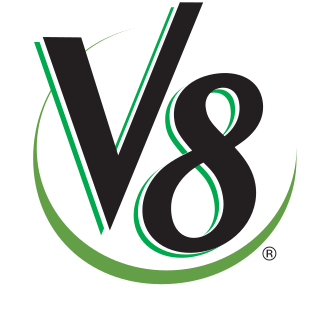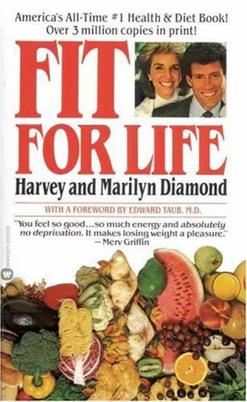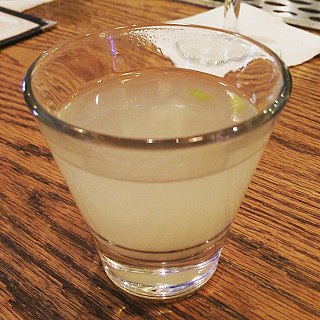
A drink or beverage is a liquid intended for human consumption. In addition to their basic function of satisfying thirst, drinks play important roles in human culture. Common types of drinks include plain drinking water, milk, juice, smoothies and soft drinks. Traditionally warm beverages include coffee, tea, and hot chocolate. Caffeinated drinks that contain the stimulant caffeine have a long history.
A macrobiotic diet is a fad diet based on ideas about types of food drawn from Zen Buddhism. The diet tries to balance the supposed yin and yang elements of food and cookware. Major principles of macrobiotic diets are to reduce animal products, eat locally grown foods that are in season, and consume meals in moderation.

Scurvy is a disease resulting from a lack of vitamin C. Early symptoms of deficiency include weakness, fatigue, and sore arms and legs. Without treatment, decreased red blood cells, gum disease, changes to hair, and bleeding from the skin may occur. As scurvy worsens, there can be poor wound healing, personality changes, and finally death from infection or bleeding.
Chinese food therapy is a mode of dieting rooted in Chinese beliefs concerning the effects of food on the human organism, and centered on concepts such as eating in moderation. Its basic precepts are a mix of Taoist Wuxing theory and concepts drawn from the modern representation of traditional Chinese medicine.

Traditional medicine comprises medical aspects of traditional knowledge that developed over generations within the folk beliefs of various societies, including indigenous peoples, before the era of modern medicine. The World Health Organization (WHO) defines traditional medicine as "the sum total of the knowledge, skills, and practices based on the theories, beliefs, and experiences indigenous to different cultures, whether explicable or not, used in the maintenance of health as well as in the prevention, diagnosis, improvement or treatment of physical and mental illness". Traditional medicine is often contrasted with scientific medicine.

Vegetable juice is a juice drink made primarily of blended vegetables and also available in the form of powders. Vegetable juice is often mixed with fruits such as apples or grapes to improve flavor. It is often touted as a low-sugar alternative to fruit juice, although some commercial brands of vegetable juices use fruit juices as sweeteners, and may contain large amounts of sodium.

V8 Vegetable Juice, sometimes simply referred to as V8, is a trademarked name for a number of beverage products sold worldwide that are made from eight vegetables, or a mixture of vegetables and fruits. Since 1948, the brand has been owned by the Campbell Soup Company.

A garnish is an item or substance used as a decoration or embellishment accompanying a prepared food dish or drink. In many cases, it may give added or contrasting flavor. Some garnishes are selected mainly to augment the visual impact of the plate, while others are selected specifically for the flavor they may impart. This is in contrast to a condiment, a prepared sauce added to another food item primarily for its flavor. A food item which is served with garnish may be described as being garni, the French term for "garnished."

Juice fasting, also known as juice cleansing, is a fad diet in which a person consumes only fruit and vegetable juices while abstaining from solid food consumption. It is used for detoxification, an alternative medicine treatment, and is often part of detox diets. The diet can typically last from one to seven days and involve a number of fruits and vegetables and even spices that are not among the juices typically sold or consumed in the average Western diet. The diet is sometimes promoted with implausible and unsubstantiated claims about its health benefits.

Israeli salad is a chopped salad of finely diced tomato, onion, cucumber, and bell or chili peppers. It has been described as the "most well-known national dish of Israel", and is a standard accompaniment to most Israeli meals. Salads following essentially the same recipe, with different names, are widespread and popular throughout the Eastern Mediterranean.

Henry G. Bieler was an American physician and germ theory denialist, best known for his book Food is Your Best Medicine, which advocated the treatment of disease with foods. He is widely recognized as a pioneer in alternative medicine who used non-pharmaceutical, diet-based therapies to treat his patients. Bieler opposed the use of any drugs, including aspirin.

Fit for Life is a diet and lifestyle book series stemming from the principles of orthopathy. It is promoted mainly by the American writers Harvey and Marilyn Diamond. The Fit for Life book series describes a fad diet which specifies eating only fruit in the morning, eating predominantly "live" and "high-water-content" food, and, if animal protein is eaten, avoiding combining it with complex carbohydrates.
Modern understanding of disease is very different from the way it was understood in ancient Greece and Rome. The way modern physicians approach healing of the sick differs greatly from the methods used by early general healers or elite physicians like Hippocrates or Galen. In modern medicine, the understanding of disease stems from the "germ theory of disease", a concept that emerged in the second half of the 19th century, such that a disease is the result of an invasion of a micro-organism into a living host. Therefore, when a person becomes ill, modern treatments "target" the specific pathogen or bacterium in order to "beat" or "kill" the disease.

Clam juice is a broth derived from steamed clams, which can be consumed on its own or used as an ingredient in various dishes and beverages.

Hangover remedies consist of foods, dishes, and medicines, that have been described as having a theoretical potential for easing or alleviating symptoms associated with the hangover.
Anthony William Coviello, known professionally as Anthony William or the Medical Medium, is a self-proclaimed medium who offers health advice based on alleged communication with a spirit. He authors books and offers advice online on forums such as Gwyneth Paltrow's Goop column and his own website. William believes that the Epstein-Barr virus is responsible for multiple ailments, including cancer. He claims to be the originator of the lemon juice in water morning detox as well as celery juicing, which he claims can offer many health benefits. Critics allege that he is practicing medicine without a license and that he has, at times, improperly solicited positive Amazon reviews for his books.

Carlson Wade was an American alternative health writer who authored many books promoting detoxification, fasting, juicing, megavitamin therapy, natural foods and raw food dieting. He developed a fad diet known as the Enzyme-Catalyst Diet.
Josiah Reddie Martin Mallett, known as Reddie Mallett, was an English freethinker, naturopath, poet and writer.














